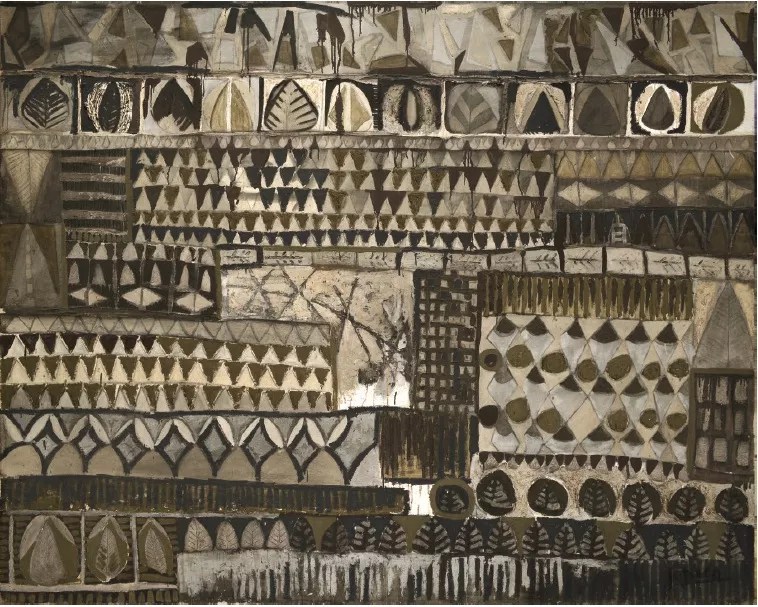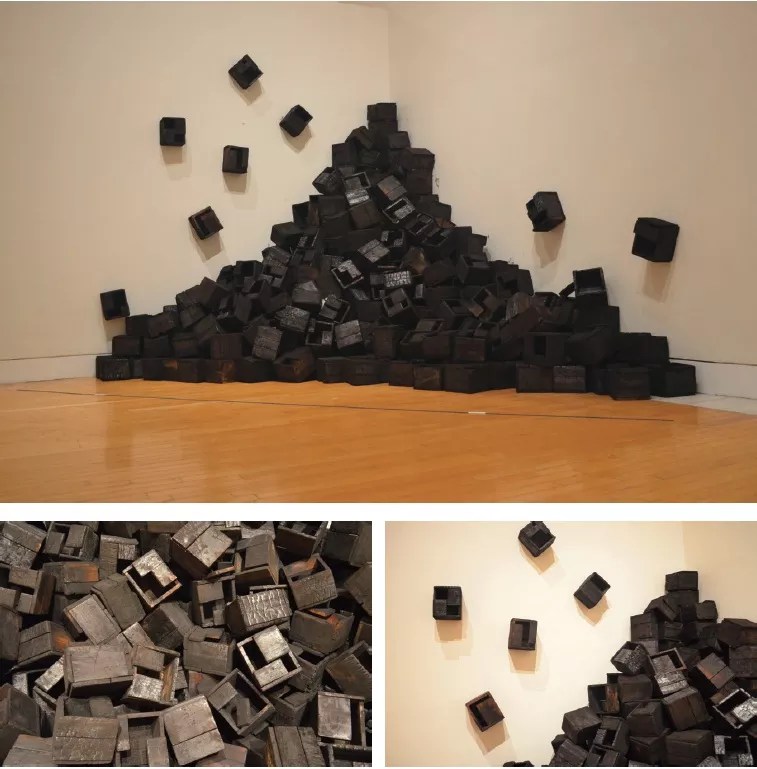
Photo courtesy of Juan Roberto Diago

Audio By Carbonatix
It’s not likely anyone would call Juan Roberto Diago a brilliant colorist.
Rather, his palette skews more toward the ashy-gray and black tones of William Kentridge, who has employed charcoal drawings for years to evoke riveting dramas of injustice, inspired by his lengthy experience with systemic racist policies in his native South Africa.
That subdued palette has likewise served Diago well in his expressive critique of racial inequities in his native Cuba, a critique that metaphorically alludes to racist attitudes present well beyond the island nation.
“Diago: The Pasts of This Afro-Cuban Present” – now on view at the University of Miami’s Lowe Art Museum – brings together 40 works from 1993 to the present. It reveals the sweep of his career and shows how inequities of the past, from slavery to postcolonial prejudice, remain embedded in the present.
“Diago” comes to the Lowe thanks in part to a collaboration with the Miami Museum of Contemporary Art of the African Diaspora (Miami MoCAAD) and Harvard University’s Afro-Latin American Research Institute, Hutchins Center for African & African American Research, and Ethelbert Cooper Gallery of African & African American Art, where “Diago” was exhibited in 2017.
Shortly before the exhibition opened at the Cooper Gallery, the artist told Cuban Art News he thinks there are multiple ways to engage with the legacy of African culture.
Railing against tired thinking about art with ties to Africa, ideas possibly shaped by vintage issues of National Geographic, Diago added, “The vision of the Afro-diasporic culture is more than masks, more than big breasts or buttocks. It’s more than a skin color. A space like this allows the possibility of expressing ourselves in our own voice.”
At the Lowe, a jagged, raw energy stemming from Diago’s voice informs Landscape I, with its network of lean gray strokes, providing the artist’s twist on the constructivist grid of Latin American master Joaquín Torres-García. This uneven grid portrays an airless space crammed with boundaries and enclosures. There’s no lush emerald-green landscape here to conjure the clichés of a Caribbean island paradise.
Diago’s My History Is Blood presents a stark, jittery portrait of a mostly featureless face with drawings of what resemble cowrie shells, used in African divination rituals, placed where eyes would be. Dense, undulating streaks of red and black drip to the canvas’ edge, concealing whatever body parts might belong to this face.
Similarly scrawled, nervous lines in Scream recall the graffiti-inspired work of Jean-Michel Basquiat.
Born into a family of cultured intellectuals, Diago surely grew up well aware of his rich Afro-Cuban heritage. His grandfather was the artist Roberto Juan Diago y Querol, whose work was shown in the landmark 1944 exhibition “Modern Cuban Painters” at New York’s Museum of Modern Art. He is also related to the Urfe family of avant-garde Cuban musicians.
His somber palette is inspired by scarcity as well as racism he encountered as an Afro-Cuban artist in postrevolutionary Cuba. Like many Cuban artists whose career took shape in the 1990s, he worked with limited materials available in Cuba, generally known as the “special period.” The country’s economy had taken a nosedive when Soviet sponsorship vanished in the wake of the collapsed Soviet Union.
Today his use of bleak, impoverished materials, such as rough wooden planks with peeling paint or cobbled-together scraps of metal, evoke shacks in rundown black neighborhoods, demonstrating how his art has long addressed Cuba’s pervasive racial inequities.
Light boxes, deliberately framed awkwardly with wooden planks, often show tender street photographs of people in Cuba. The pieces strike more positive notes than his works on canvas.
Possibly in a similar vein, Ascending City shows an expanding constellation of charred wooden boxes, like miniature shanties, scattered on the floor and along museum walls, where they’ve been mounted at varying heights. These boxes seem to rise upward in all directions, propelled by their own persistent strength.

Ascending City (2010) makes use of blunt, expressive, and rough-hewn materials.
Photo courtesy of Jenny Abreu
Diago chooses scraps of wood and metal with uneven, raised surfaces, thought to recall keloids. Keloids are raised scars left on black skin as a result of physical trauma. They can be symbolically linked to ongoing ramifications of slavery. Such blunt, expressive, and rough-hewn materials are apparent in works from his series Oggun’s Variations and the installation Memory Footprint.
As curator Alejandro de la Fuente explains in his essay for the exhibit, in the 1990s, Diago was one of the numerous black artists who defied official Cuban propaganda claiming the country was racially integrated and egalitarian; Cuban hip-hop musicians denounced police brutality against blacks.
“Diago” could hardly have reached Miami at a better moment. This exhibit joins the Magic City’s confluence of significant events exploring the nuances of Afro-Caribbean art and culture, illustrating its compelling presence on the international stage afforded by Miami Art Week.
Kicking off that week was an official Art Basel Miami Beach event presented by the Lowe, offering a conversation between de la Fuente and noted African and African diaspora scholar Barbaro Martinez-Ruiz about Diago and his art. It was moderated by Marilyn Holifield, cofounder of Miami MoCAAD.
Other events during Miami Art Week spotlighted the region’s burgeoning connections to art of the African diaspora and Africa, in tune with “Diago.” Among them were Prizm Art Fair, founded in 2013, and the provocatively titled exhibit “Who Owns Black Art?” presented at Miami Urban Contemporary Experience, an arts production company based in Little Haiti. It was organized by ZEAL, a multimedia group based in Los Angeles and New York City that supports black visual and performance artists, still too often overlooked or underrepresented at major art venues.
– Elisa Turner, artburstmiami.com
“Diago: The Pasts of This Afro-Cuban Present.” Through Sunday, January 19, at the University of Miami Lowe Art Museum, 1301 Stanford Dr., Coral Gables; 305-284-3535; lowe.miami.edu. Admission is $12.50 for adults and children aged 12 or older; $6 for students; $8 for seniors; and free for members, children younger than 12, UM students, faculty, and staff; U.S. military personnel, AAM members, AAMG members.